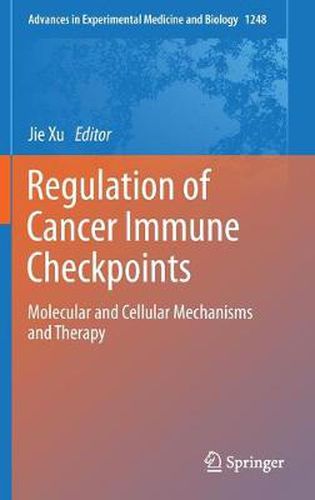Readings Newsletter
Become a Readings Member to make your shopping experience even easier.
Sign in or sign up for free!
You’re not far away from qualifying for FREE standard shipping within Australia
You’ve qualified for FREE standard shipping within Australia
The cart is loading…






This title is printed to order. This book may have been self-published. If so, we cannot guarantee the quality of the content. In the main most books will have gone through the editing process however some may not. We therefore suggest that you be aware of this before ordering this book. If in doubt check either the author or publisher’s details as we are unable to accept any returns unless they are faulty. Please contact us if you have any questions.
This book systematically reviews the most important findings on cancer immune checkpoints, sharing essential insights into this rapidly evolving yet largely unexplored research topic. The past decade has seen major advances in cancer immune checkpoint therapy, which has demonstrated impressive clinical benefits. The family of checkpoints for mediating cancer immune evasion now includes CTLA-4, PD-1/PD-L1, CD27/CD70, FGL-1/LAG-3, Siglec-15, VISTA (PD-1L)/VSIG3, CD47/SIRPA, APOE/LILRB4, TIGIT, and many others. Despite these strides, most patients do not show lasting remission, and some cancers have been completely resistant to the therapy. The potentially lethal adverse effects of checkpoint blockade represent another major challenge, the mechanisms of which remain poorly understood. Compared to the cancer signaling pathways, such as p53 and Ras, mechanistic studies on immune checkpoint pathways are still in their infancy.
To improve the responses to checkpoint blockade therapy and limit the adverse effects, it is essential to understand the molecular regulation of checkpoint molecules in both malignant and healthy cells/tissues. This book begins with an introduction to immune checkpoint therapy and its challenges, and subsequently describes the regulation of checkpoints at different levels. In closing, it discusses recent therapeutic developments based on mechanistic findings, and outlines goals for future translational studies. The book offers a valuable resource for researchers in the cancer immunotherapy field, helping to form a roadmap for checkpoint regulation and develop safer and more effective immunotherapies.
$9.00 standard shipping within Australia
FREE standard shipping within Australia for orders over $100.00
Express & International shipping calculated at checkout
This title is printed to order. This book may have been self-published. If so, we cannot guarantee the quality of the content. In the main most books will have gone through the editing process however some may not. We therefore suggest that you be aware of this before ordering this book. If in doubt check either the author or publisher’s details as we are unable to accept any returns unless they are faulty. Please contact us if you have any questions.
This book systematically reviews the most important findings on cancer immune checkpoints, sharing essential insights into this rapidly evolving yet largely unexplored research topic. The past decade has seen major advances in cancer immune checkpoint therapy, which has demonstrated impressive clinical benefits. The family of checkpoints for mediating cancer immune evasion now includes CTLA-4, PD-1/PD-L1, CD27/CD70, FGL-1/LAG-3, Siglec-15, VISTA (PD-1L)/VSIG3, CD47/SIRPA, APOE/LILRB4, TIGIT, and many others. Despite these strides, most patients do not show lasting remission, and some cancers have been completely resistant to the therapy. The potentially lethal adverse effects of checkpoint blockade represent another major challenge, the mechanisms of which remain poorly understood. Compared to the cancer signaling pathways, such as p53 and Ras, mechanistic studies on immune checkpoint pathways are still in their infancy.
To improve the responses to checkpoint blockade therapy and limit the adverse effects, it is essential to understand the molecular regulation of checkpoint molecules in both malignant and healthy cells/tissues. This book begins with an introduction to immune checkpoint therapy and its challenges, and subsequently describes the regulation of checkpoints at different levels. In closing, it discusses recent therapeutic developments based on mechanistic findings, and outlines goals for future translational studies. The book offers a valuable resource for researchers in the cancer immunotherapy field, helping to form a roadmap for checkpoint regulation and develop safer and more effective immunotherapies.